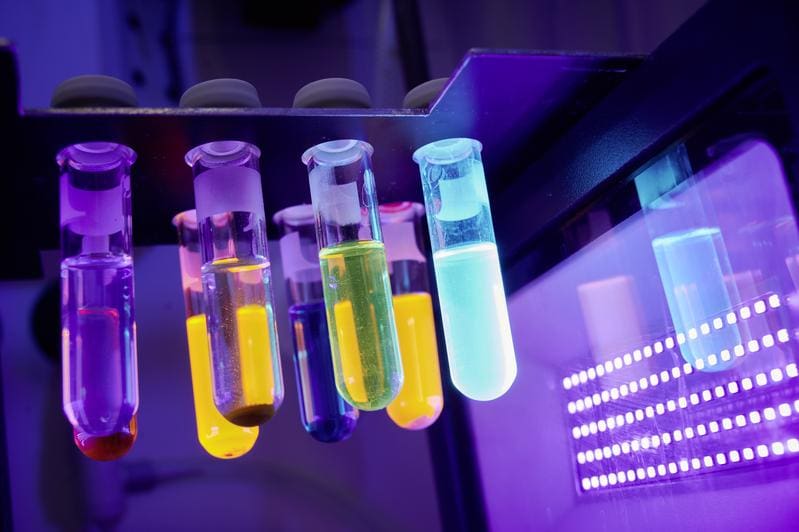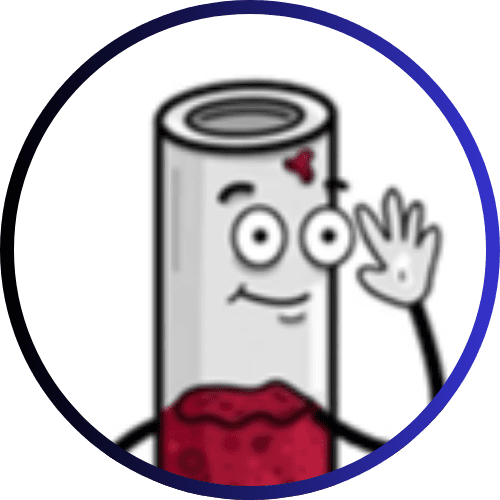Photocatalysis: Rostock researchers develop environmentally friendly methods for chemistry
Photocatalysis is establishing itself as one of the leading fields in chemistry, where significant findings are being made. At the Leibniz Institute for Catalysis in Rostock , Dr. Jola Pospech leads a team that is developing innovative approaches for established reaction pathways. A central example is hydrofunctionalization, which leads to valuable products such as bioactive amines. These compounds occur naturally in neurotransmitters and play a key role in the development of new drugs. In teaching and research, Pospech relies on vivid illustrations to give students an understanding of the principles of photocatalysis.
In the laboratory, simple black light is often used as a light source, which consists of UV-A LEDs and is common in areas such as dentistry or entertainment. This light has the appropriate wavelength to trigger chemical processes. It hits the electrons of the substances involved, especially the catalyst, and puts it in an excited state. This allows the catalyst to release or absorb electrons, which activates the starting materials and enables new compounds. At its core, it is about the exchange or joint use of electrons between the reaction partners.

A central aspect is photoredox catalysis, which combines oxidation and reduction. In oxidation, the catalyst releases an electron and takes it up again later, while in reduction the reverse process takes place. This dynamic can be compared to an interplay in which an energy boost from photons enables a temporary shift that allows for new interactions. After the reaction is complete, the initial state returns and the cycle can start again.
Traditionally, chemistry is based on heating the reaction vessels to overcome activation barriers. With light, however, this can be achieved faster and with higher energy efficiency. Modern LED technologies allow the wavelength to be precisely adapted to the absorption behavior of the catalyst. Hydrofunctionalization is particularly nuclear-economic, as all atoms of the starting materials are used without waste products. This leads to bioactive amines, which are essential for pharmaceutical applications.
Previous methods often use rare and expensive metals as catalysts, supplemented by numerous intermediate steps, auxiliary catalysts and additional reagents that only donate electrons. Instead, the team in Rostock has developed organic photoredox catalysts based on nitrogen, hydrogen, oxygen and carbon. These can be produced inexpensively, can be efficiently activated by UV light and fulfil several functions at the same time. This eliminates the need for auxiliary components and additional reagents.
The group is currently working on giving these catalysts a selective property by incorporating amino acids. Amino acids provide defined spatial structures that enable stereo-specific control. This should make it possible to produce molecules in their right or left form in a light-controlled manner, which is advantageous for the synthesis of chiral compounds.
Experts estimate that such advances from basic research will be implemented industrially in the long term. Many large chemical companies already have their own departments for photocatalysis and electrochemistry to integrate these techniques. The Leibniz Institute is thus positioning itself at the forefront of current developments in catalysis.
PREVIEW: The German Congress of Laboratory Medicine (DKLM) 2025 promises exciting insights into the interface between science and clinical practice. Under the motto “Science for Precision Medicine”, the German Society for Clinical Chemistry and Laboratory Medicine (DGKL) and the Umbrella Association for Technologists and Analysts in Medicine Germany (DVTA) invite experts from research, clinics and industry to meet on October 23 and 24 at the Congress Center Leipzig (CCL). The two-day event is aimed at laboratory physicians, biomedical analysts and decision-makers to discuss current advances in diagnostics and strengthen networks. The ceremonial opening of the congress will take place on 22 October with the presentation of the MedLabAwards in the Salles de Pologne.
Editor: X-Press Journalistenbû¥ro GbR
Gender Notice. The personal designations used in this text always refer equally to female, male and diverse persons. Double/triple naming and gendered designations are used for better readability. ected.




